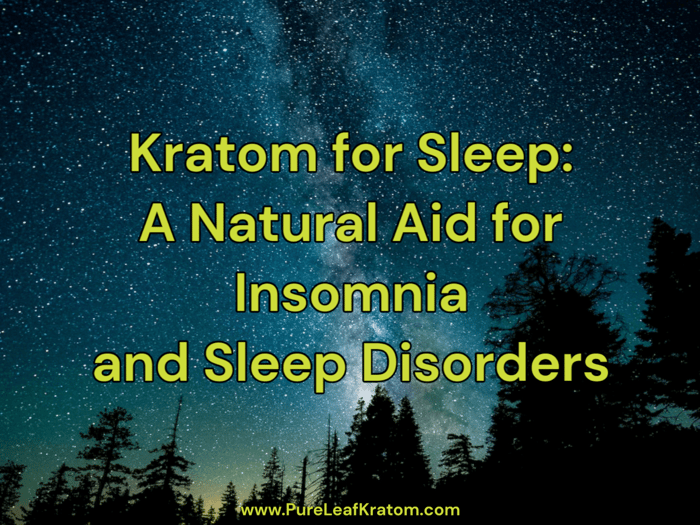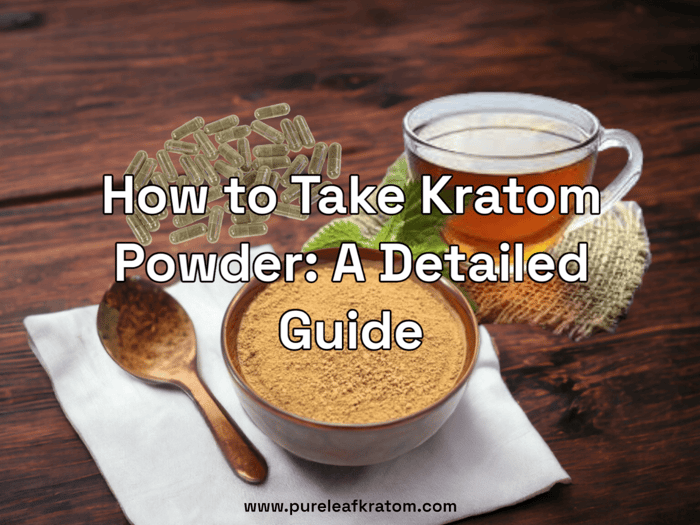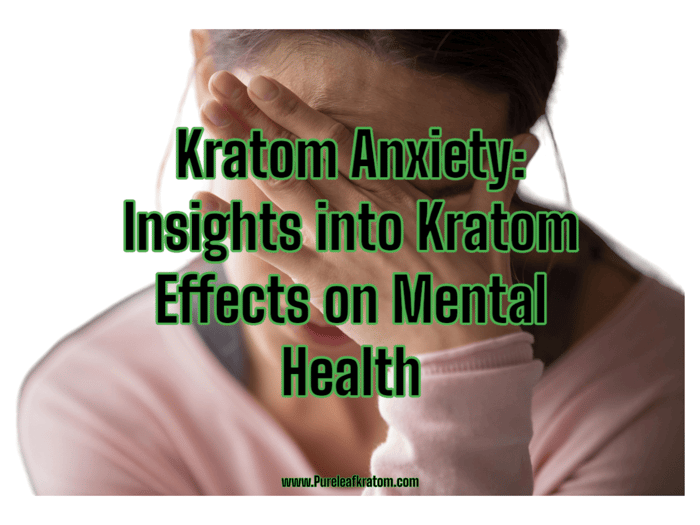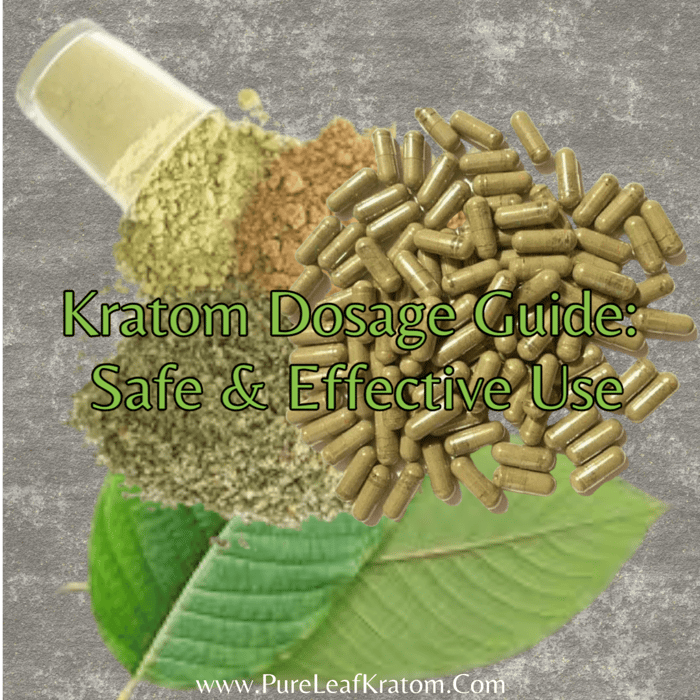
How Much Kratom Should I Take? A Guide on Recommended Kratom Dosages
Exploring the Essentials of Kratom
For ages, Kratom, sourced from the leaves of the Southeast Asian tree Mitragyna speciosa, has played a role in traditional medicine. The bioactive alkaloids, Mitragynine and 7-Hydroxymitragynine, interact with opioid receptors, providing a mix of stimulant and opioid-like effects such as heightened energy, pain relief, and relaxation—outcomes influenced by dosage. Historically, Kratom was used to boost alertness and productivity in work and social settings.
$9.95 Raw Kratom Green Maeng Da Powder Experience the pure and potent goodness of Raw Kratom Powder Green Maeng Da in your favorite powder form. The...… read moreRaw Kratom Powder Green Maeng Da
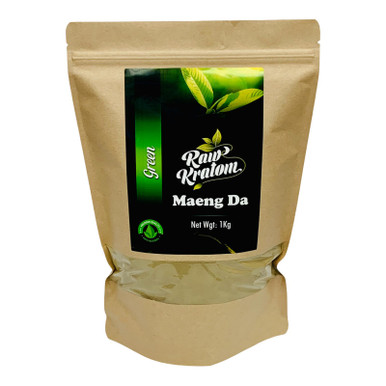
Today, modern users leverage Kratom products to manage distresses like chronic pain, drug cravings, withdrawal symptoms, anxiety, and depression. Ongoing research examines Kratom's potential therapeutic applications, particularly for chronic pain and opioid use disorder. Yet, given safety concerns related to long-term use and possibilities of withdrawal symptoms, users need to proceed with caution.
Understanding Kratom's Global Significance and Regulations
Born out of Southeast Asia, Kratom has embarked on a global journey, becoming popular worldwide for its stimulant and opioid-like effects. But this rise in popularity has led to legal complications. Several countries, including Australia, Malaysia, Myanmar, and Thailand, have officially banned Kratom. Although the United States does not enforce a federal ban, particular states regulate Kratom by placing age restrictions, implementing outright bans, or passing Kratom Consumer Protection Acts to manage sales. However, the global legal landscape surrounding Kratom remains murky and continually involves, largely due to the limited research available on its risks, its extensive traditional use in Asia, and its burgeoning international consumption.
Kratom’s Interaction with Opioid Receptors
One reason for Kratom's appeal is its interaction with opioid receptors. Both Mitragynine and 7-Hydroxymitragynine, the primary alkaloids in Kratom, bind to these receptors, producing significant effects that vary depending on the dose. While opioids also interact with these receptors, Kratom often results in a less harsh impact compared to opiates, explaining its usage as an opioid withdrawal agent.
This unique function positions Kratom as a viable alternative for those seeking relief from certain conditions. However, caution is advisable: potential health concerns necessitate prudence and possibly consultation with healthcare professionals.
K Tropix 2K Series Energy Blend Kratom Shot Pink Lightning Lemonade
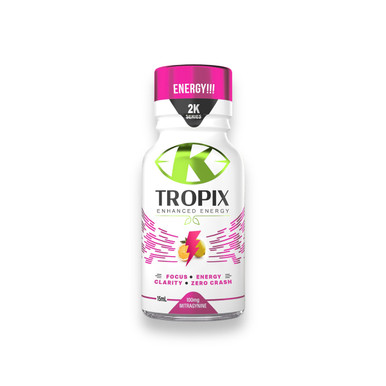
$12.69
K Tropix 2K Series Energy Blend Kratom Shot Pink Lightning Lemonade K Tropix 2K Series Energy Blend Kratom Shot in the flavor Pink Lightning Lemonade...… read more
Comprehensive Analysis of Effects of Kratom at Different Dosages
Knowing the effects of various Kratom dosages is key to responsible use. Dosage impacts not only the strength but also the nature of the effects. Below we highlight the physiological and psychological impacts of low, moderate, and high doses.
Detailed Effects at Low Doses (1-5 grams)
Typically, a low dose of Kratom, often referred to as a beginner dose, ranges from 1 to 5 grams. At this level, Kratom exhibits its stimulant properties, similar to caffeine. Users may experience increased energy, alertness, and sociability.
The psychological effects at low doses often include enhanced mood, reduced anxiety, and mental clarity. These effects typically set in 10-15 minutes after consumption and can last from 2 to 5 hours. Thus, this dosing guide recommends starting at this level for new users.
Thorough Analysis of Impact at Moderate Doses (5-15 grams)
When the dosage increases to a moderate level, between 5 to 15 grams, the effects of Kratom shift from stimulating to sedating. This change in properties is due to the interaction of Kratom with opioid receptors. These doses can be effective for managing chronic pain and mitigating opioid withdrawal symptoms.
Psychologically, moderate doses can induce feelings of euphoria, tranquility, and decreased sensitivity to physical and emotional pain. It also acts as a sedative, inducing drowsiness which can last for several hours depending on the individual. However, potential negative effects, including irritability, restlessness, and reduced motivation, should not be ignored.
Extensive Discussion on Risks at High Doses (over 15 grams)
Kratom dosages exceeding 15 grams, considered high doses, carry significant risks. The euphoria and sedative effects intensify, but the risk of undesired side effects such as nausea, dizziness, and potential gastrointestinal issues also increase.
Psychologically, high doses can lead to a state of dreamy reverie, which, however comforting it might seem, carries serious potential long-term risks. Persistent high-dose usage can lead to dependence and severe withdrawal symptoms, including anxiety, restlessness, and depression. In addition, a study of long-term, high-dose kratom users revealed an increased risk for cardiovascular problems, indicating the potential physical harm of persistent heavy usage.
Regardless of the dosage, users should strive for accuracy when measuring Kratom, whether by using teaspoons, weighing powder, or opting for pre-packaged capsules. Ultimately, the key to safe and effective kratom use lies in moderation, informed decision-making, and ongoing consultation with healthcare professionals.
Bumble Bee Kratom Powder Kalamantan Sapphire Maeng Da

$13.49
Bumble Bee Kratom Powder Kalamantan Sapphire Maeng Da Make the perfect blend of Kratom with our Bumble Bee Kratom Powder Kalamantan Sapphire Maeng Da! High-quality...… read more
Expanded Reasons for Using Kratom and Emphasizing Responsible Use
The diverse effects of Kratom can make it appealing for various reasons, including as an aid for opioid withdrawal, a natural remedy for chronic pain or even for recreational use. However, understanding these uses requires nuanced appreciation of the associated benefits, risks, and the critical importance of responsible dosing.
Varied Reasons for Kratom Use
Kratom as an Opioid Withdrawal Agent
Kratom's interaction with opioid receptors has positioned it as a potential substitute for harsher opioids, especially for those seeking to manage withdrawal symptoms. Research has observed this with patients using Kratom tea to manage both chronic pain and opioid withdrawal. The alkaloids mitragynine and 7-hydroxymitragynine, found in Kratom, can mimic the effects of opioids, providing temporary relief from withdrawal symptoms. However, these effects are less extreme than those of conventional opioids, making it a potential alternative for withdrawal and replacement therapy.
Kratom for Chronic Pain Management
Just as Kratom can offer relief from opioid withdrawal, it can also provide temporary relief from chronic pain. The same active compounds that act on opioid receptors can have a pain-relieving effect, making it a viable option for chronic pain sufferers. Still, users must tread carefully, as the risk of developing dependence increases with regular, high-dosage usage.
Recreational Kratom Use
Recreational use of Kratom often involves using the plant for its stimulant or sedative effects, which vary depending on the dosage level. Potential users should be aware that recreational use, especially at higher doses, amplifies not only the desired effects but also the risk of negative side effects, including nausea, irritability, and dependency.
Importance of Consulting Health Professionals Before and During Kratom Use
Given the wide range of Kratom's potential effects and the possible health risks it carries, consulting with a healthcare professional before starting or while using Kratom is of paramount importance. This is especially important to ensure the right dosage and to determine potential interactions with other substances or treatments.
For instance, Kratom may interact with drugs through its effects on liver enzymes, making it vital for those on any medication to consult a healthcare provider. It's also recommended to communicate regularly with healthcare providers about Kratom usage, as well as undergo regular check-ups to monitor any physiological or psychological changes related to its use.
Before starting Kratom, it’s crucial to ensure the source product is lab-tested and unadulterated. Commercial Kratom products often lack standardization and quality control, emphasizing the need for informed decision-making when choosing a Kratom source.
Negative Effects Related to Kratom Dosage
As with any substance, the potential for negative effects exists with Kratom use, particularly at higher or more frequent doses. Effects can be physiological, psychological, or both, and can range from mild discomfort to severe health issues.
Common Gastrointestinal Issues
Kratom can commonly contribute to gastrointestinal discomfort. Nausea and vomiting are fairly frequent side effects, particularly at higher doses. There have been more severe cases where individuals have experienced substantial gastrointestinal complications after long-term use of Kratom-containing supplements, including pancolitis, liver injury, and persistent diarrhea. A study found that a year-long daily intake led to irreversible damage necessitating subtotal colectomy and eventually a liver transplant.
The potential for constipation is another gastrointestinal side effect of this substance. While Kratom has traditionally been used in Southeast Asia to manage diarrhea, studies have also found that the extract can inhibit intestinal transit time. Prolonged daily dosage may contribute to constipation. Adopting remedies such as increased intake of fiber and water can help manage this issue.
Psychological Effects such as Agitation
Extension of use and inappropriate dosage of Kratom can cause psychological effects, such as agitation, anxiety, and depression. These side effects can negatively impact an individual's mental well-being and make daily functioning difficult. Responsible use and consultation with healthcare professionals can assist in managing these symptoms.
Discussion on Cravings and Withdrawal Symptoms
Kratom can incite physiological cravings, typically following more prolonged misuse. These cravings can lead to increased consumption, further exacerbating the body’s dependence on Kratom. Long-term, regular users are far more likely to report more severe dependency, withdrawal symptoms, and uncontrolled cravings, according to a study from Malaysia conducted on 293 frequent Kratom users.
Kratom withdrawal symptoms are broad-ranging, including physiological aspects such as muscle spasms and pain, sleeping difficulty, and diarrhea. Moreover, psychological aspects such as restlessness, tension, anxiety, and uncontrolled cravings can occur when consumption reduces or ends completely.
Comprehensive Guide to Managing Kratom Withdrawal
Withdrawal from Kratom, while rarely lethal, can be uncomfortable. The process typically begins 12-24 hours after the last dose, peaks on days 1-3, and can last for between 3-10 days depending on the degree of dependence. Over-the-counter medications, hydration, eating small meals, adopting relaxation techniques, and supervised medical treatment can alleviate these symptoms. In more severe cases of addiction, medication-assisted treatment can be required.
Detailed Examination of Different Strains of Kratom and Potentiators
The effects of Kratom vary fundamentally based on the particular strain being used. Named after the color of the veins on the leaves from which they are extracted, the predominant strains include Red Vein, White Vein and Green Vein Kratom. Each of these strains has unique characteristics and can be used situationally to achieve specific effects.
In-depth Look at Red Vein, White Vein and Green Vein Kratom
Red vein Kratom is generally associated with pain relief and relaxation. Users often utilize this strain for its sedative qualities, which can help in managing chronic insomnia.
White Vein Kratom, in contrast, is known for its stimulating and energizing impact. Users report an increase in focus, stamina, and mood elevation after its use, which can make it a practical choice for individuals battling fatigue or depressive symptoms.
Giving a balanced blend of the two, Green Vein Kratom combines the properties of the Red and White strains. It can offer gentle stimulation, which can contribute to enhanced focus, coupled with mild pain relief.
Despite these reported distinctions in the effects of each strain, it's essential to take into account that the specific attributes can be influenced by factors such as growing conditions, harvesting techniques, and processing methods. It is also worth noting that while general tendencies are described, subtle differences exist within each color strain, and users often report varied responses to the same strain [1].
Examining the Effects of Different Strains
Collectively, Red, White, and Green Vein Kratom strains offer a wide array of effects ranging from stimulation to relaxation and pain relief. However, these effects are largely dependent on the dosage, with higher doses tending to be more sedative regardless of strain. Experimenting with different strains can be beneficial to find the one that best suits your needs [2].
Concept of Strain rotation and Benefits
Some users practice strain rotation, which involves switching between different strains of Kratom to achieve varied experiences or avoid tolerance from using the same strain regularly. However, care must be taken to prevent overuse, as all Kratom strains can lead to dependence.
Introduction to Potentiators: Enhancing Kratom Effects
Potentiators are substances that can enhance the effects of Kratom. They operate by aiding the absorption or prolonging the effects of the Kratom alkaloids, such as mitragynine and 7-hydroxymitragynine. Examples of popular Kratom potentiators include grapefruit juice, ethanol, and caffeine [3]. However, further research is needed to fully understand their interactions with Kratom and potential risks.
Ultimately, the choice of a particular Kratom strain, its dosage, and the use of any potentiators should be dictated by responsible use. This might involve starting at low doses, carefully weighing the powder, and consulting a healthcare professional when in doubt.


